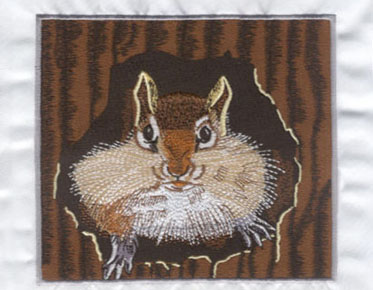Things Need to Know For Beginners to Become Professional in Digitizing
The process of digitizing embroidery designs can be overwhelming, especially for beginners who are new to machine embroidery. Each element of a design requires decision making about thread tension, stitch types, and underlay. It is easy for new digitizers to focus solely on software tutorials without considering the importance of understanding embroidery techniques and materials. Now let's follow Eagle Digitizing to learn what need to know to become professional digitizer.
To become proficient in digitizing, there are three categories of knowledge that must be pursued: understanding materials and equipment, technical knowledge about embroidery digitizing, and understanding of software.
Understanding of Materials and Equipment:
1. Basic understanding of embroidery
machine functions
2. Knowledge of thread behavior when
stitched
3. Understanding of how specific
threads, needles, and fabrics react when used together
4. Knowledge of how materials hold
up to the stresses of embroidery
5. Understanding of how stabilizers
keep materials solid
6. Knowledge of how thread tension
affects a design
7. Understanding of how to maintain
the balance between bobbin and top thread tensions
8. Learning how tight a garment should be hooped to avoid negative impacts on embroidery quality
Technical Knowledge About Embroidery and Digitizing:
1. Knowledge of the different stitch
types of machine embroidery
2. Understanding of which stitch
types are appropriate for specific elements
3. Knowledge of maximum and minimum
sizes for stitch types and elements
4. Understanding of stitch placement
to fully cover material without putting undue stress on the ground or making
the decoration overly stiff
5. Knowledge of how to express
measurements used in embroidery
6. Understanding of the roles of
underlay in combating garment show-through
7. Knowledge of common distortion
types and how to counteract them
8. Learning the order in which elements
should run to create designs logically and efficiently
9. Understanding how altering stitch angles, overlaps, proper cornering and joints, and when to use 'tie' stitches can affect the final product
Understanding of Software:
1. Knowledge of software tools to
create shapes and specify stitch variables
2. Understanding of how to import
various art files and set up digital work areas
3. Learning how to create, edit, and
resequence elements
4. Knowledge of how to export files in the proper format for a specific machine.
Fortunately, educational resources for learning these skills are widely available and often free. Embroidery experience is also an essential part of the learning process. Time spent embroidering allows new digitizers to gain valuable insight into how materials, machinery, and digitizing interact with each other.
If you're busy with your business
and don't have time to digitize designs yourself, you can come to Eagle Digitizing. We are a company that
specializes in providing digitizing services
and vector conversion services, and
we welcome you to contact us at any time.

